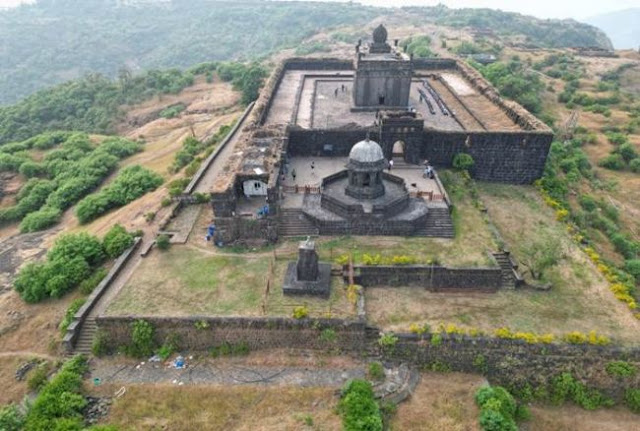12 Maratha forts of 'Maratha Military Landscapes', representing extraordinary fortification and military system envisioned by the Maratha rulers, have been inscribed on the prestigious UNESCO World Heritage List.
The decision to include 12 forts in the list was taken during the ongoing 47th session of the World Heritage Committee (WHC) being held in Paris.
"New inscription on the @UNESCO #WorldHeritage List: Maratha Military Landscapes of India, #India," UNESCO said in a post on X.
Now India has 44 of its sites on the list. The country ranks sixth globally and second in the Asia Pacific Region for the most number of World Heritage Sites.
Spread across the Indian states of Maharashtra and Tamil Nadu, 12 forts are Salher, Shivneri, Lohgad, Khanderi, Raigad, Rajgad, Pratapgad, Suvarnadurg, Panhala, Vijaydurg, and Sindhudurg in Maharashtra, along with Gingee Fort in Tamil Nadu.
Of the 12 forts eight are protected by the Archaeological Survey of India (ASI) while the other forts are protected by the Directorate of Archaeology and Museums, Government of Maharashtra.
While Shivneri fort, Lohgad, Raigad, Suvarnadurg, Panhala fort, Vijaydurg, Sindhudurg and Gingee fort are protected under the Archaeological Survey of India whereas Salher fort, Rajgad, Khanderi fort and Pratapgad are protected by the Directorate of Archaeology and Museums, Government of Maharashtra.
Belonging to the period from the 17th to 19th centuries CE, this network of twelve forts demonstrates the strategic military vision and architectural ingenuity of the Maratha Empire.
Last year Moidams, the 700-year-old mound-burial system of the Ahom dynasty in Assam were inscribed in the UNESCO World Heritage List at the 46th Session of the World Heritage Committee held in New Delhi, becoming the first cultural site from the Northeast India to make it to the coveted list.
12 forts Maratha Military Landscapes
Salher Fort
Situated atop three hillocks — Rajagiri, Krishnagiri, and Chandragiri in Tamil Nadu's Villupuram district, the Gingee Fort was built in the 12th century by the rulers belonging to the Konar Dynasty.
Later it came under the control of many dynasties that included the Vijayanagar Empire, Marathas, Mughals, Arcot's Nawabs (Carnatic Nawabs), the French, and the British.
Called ‘Troy of the East’ by the British, the Gingee Fort is known for its invincibility and immense fortifications which made Maratha ruler Chhatrapati Shivaji to rank
it as the "most impregnable fortress in India". The fort was captured by Shivaji in 1677. After remaining under the Maratha possession till 1698 it came under the control of the Mughals. In 1714 the Arcot Nawabs captured the fort from the Bundela Rajput Raja Desingh (Tej Singh) by killing him who ruled Gingee for a short time in the same year. Desingh's wife committed sati on his funeral pyre.
Gingee remained under the control of Arcot Nawabs till 1749. The fort came under the French power from 1750 to 1770 before the British finally took control of Gingee in 1761.
Suvarnadurg fort meaning The Golden Fort, is located on a small island in the Arabian Sea, near Harnai village in Ratnagiri district of Konkan. It is near the town of Dapoli.
The famous and formidable Pratapgad fort located on a hilltop was the place where Afzal Khan, one of the foremost nobles and generals of Deccan's Adil Shahi dynasty, was killed by Shivaji when the former went to the this fort to eliminate the Maratha ruler.
In 1659 Ali Adil Shah sent Afzal Khan to bring Shivaji back to Bijapur dead or alive. In order to apprehend Shivaji, Afzal Khan proposed a meeting with Shivaji, promising him pardon and grant of territory. In the meeting that ensued Afzal Khan tried to attack Shivaji with a dagger while embracing him. But Shivaji was able to kill Afzal with gloves with steel claws (bahgh nakh).



 Gingee Fort
Gingee Fort




Comments
Post a Comment